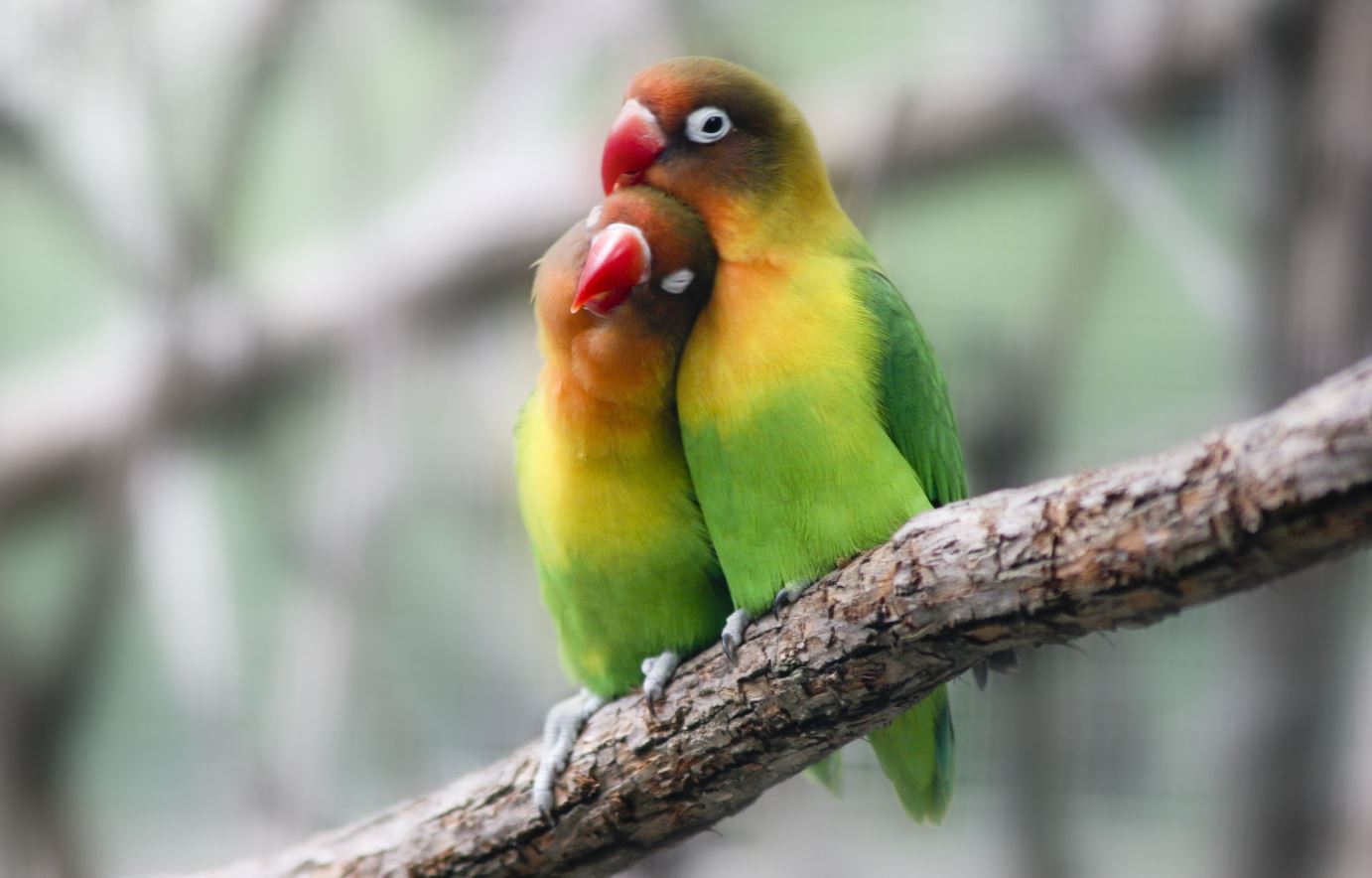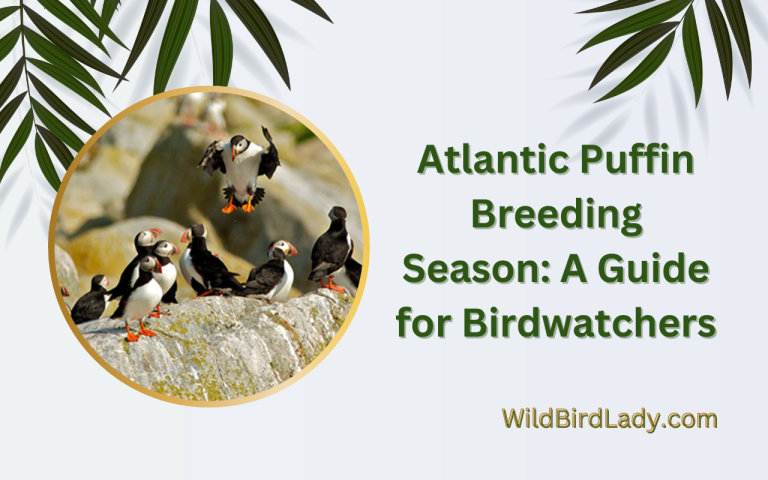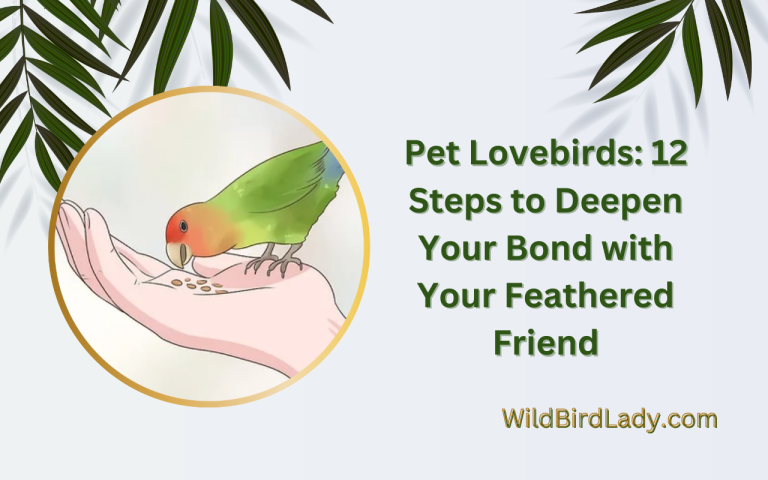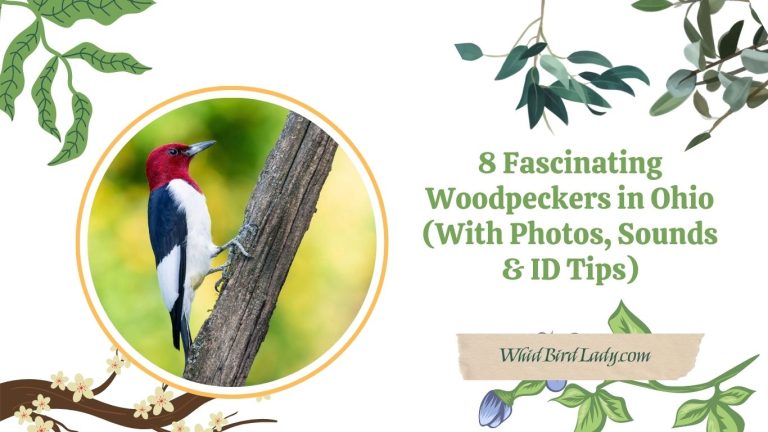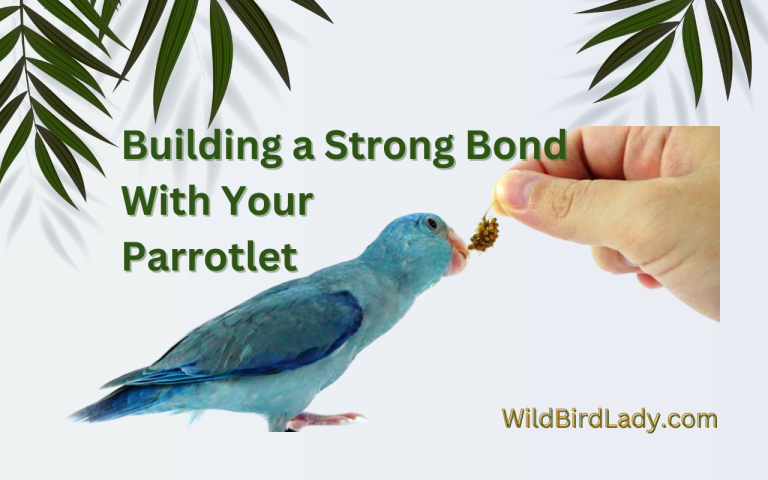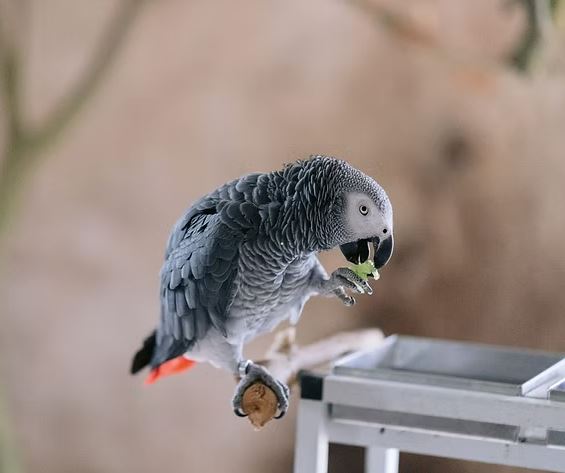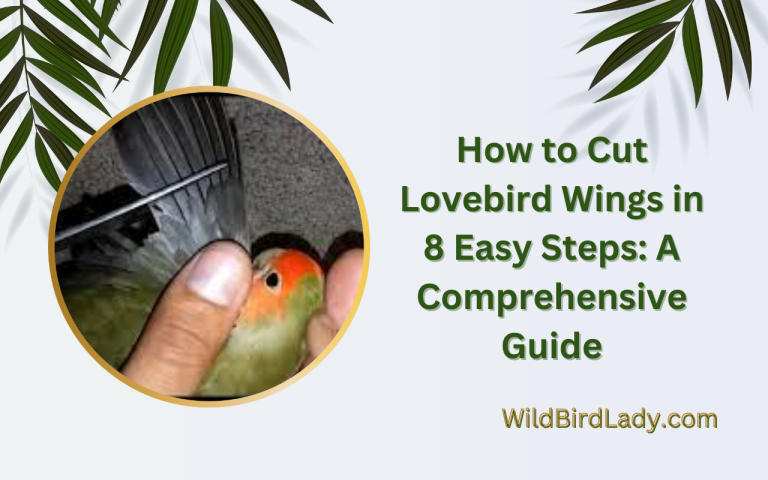The Ultimate Lovebird Guide: All You Need to Know!
Lovebirds are popular pets known for their affectionate nature and vibrant personalities. In this ultimate guide, we will provide you with everything you need to know about caring for your lovebird.
From their diet and housing needs to socialization and health concerns, we’ll cover it all in a concise and informative manner, ensuring that you have the knowledge you need to keep your little feathered friend happy and healthy. Whether you’re a first-time lovebird owner or a seasoned bird enthusiast, this guide will provide you with valuable insights into the world of lovebird care.
So, let’s dive in and explore all there is to know about your parrot.
Credit: www.youtube.com
Understanding Lovebirds
Lovebirds are fascinating birds, and they have been kept as pets for centuries because of their charming personalities and striking beauty. Understanding these birds is crucial for providing them with the best care possible. In this section, we will explore what lovebirds are, where they are naturally found, and their physical and behavioral characteristics.
What Are Lovebirds?
Lovebirds, also known as agapornis, are small, social birds that are native to africa. They are part of the parrot family and have a particular affinity for bonding with their companions. The name ‘lovebird’ comes from their strong inclination to form lifelong bonds with their mates.
Lovebirds are available in many different species and colors, each with unique markings and personalities. Some of the most common lovebird species include the fischer’s, peach-faced, and the black-masked lovebirds.
Where Are They Naturally Found?
Lovebirds are originally from africa, where they can be found in a wide range of habitats, including savannas, forests, and deserts. Many species of lovebirds can be found across the continent, with some living as far south as south africa and as far north as the nile river.
What Are The Physical And Behavioral Characteristics Of Lovebirds?
Lovebirds are small birds, typically measuring between 13-17cm in length. They have a robust and plump body, with short tails and broad wings. Here are some physical and behavioral characteristics of lovebirds:
- They have a curved beak, which they use to crack seeds.
- Lovebirds have a fully feathered face and forehead, which helps them to regulate their temperature.
- They are active birds that require ample space to fly and play.
- Lovebirds are social beings and crave attention from their owners.
- They are vocal birds that communicate with their owners and other birds.
- Lovebirds are intelligent birds that require mental stimulation, such as toys and puzzles.
Overall, lovebirds are fascinating creatures that make excellent companions. Understanding their unique characteristics will help you provide the best care possible and build a loving relationship with your bird.
Choosing The Best Lovebird For You
Lovebirds are adorable and make great pets, but choosing the right one for you can be tough. Different lovebird species have different temperaments and needs, so it’s crucial to choose one that suits your lifestyle.
Different Types Of Lovebirds
Before making your decision, it’s essential to understand the different lovebird species and their varying characteristics:
- Peach-faced lovebirds: They are the most popular lovebirds due to their stunning peachy-pink faces and bright green feathers. They are intelligent, energetic, and playful, making them a great choice for people who have a lot of time to spend with their pets.
- Fischer’s lovebirds: These lovebirds are a little smaller and less active than peach-faced lovebirds. They are quieter and less likely to become aggressive when kept alone, making them perfect for people who are worried about noise levels.
- Masked lovebirds: These lovebirds are the smallest and quietest of the three species. They are often kept in pairs or small groups, and they tend to be skittish around strangers. If you’re looking for a pet to keep you company but aren’t too worried about bonding with them, masked lovebirds may be the right choice for you.
Signs Of A Healthy Lovebird
It’s also crucial to choose a healthy lovebird. Here are some things to look out for when buying a lovebird:
- Bright, alert eyes: A healthy lovebird should have bright and clear eyes, free from discharge.
- Clean feathers: Make sure that your lovebird’s feathers look healthy and free from any signs of parasites or mites.
- Active behavior: A good lovebird should be energetic and lively, with active beak and feet movements, and readiness to play or interact with its surroundings.
How To Choose The Best Lovebird For You
Choosing the best lovebird for you requires considering your lifestyle. Here are some questions to ask yourself before making your decision:
- Do i have the time to spend with my lovebird? If not, a quieter and less active lovebird may be a better choice.
- Do i live in a noisy or quiet area? If you live in an apartment building with thin walls, a quiet lovebird such as fischer’s or masked lovebird may be a better choice.
- Am i comfortable with owning a single pet bird, or do i want to keep a pair or small group of lovebirds? Peach-faced lovebirds typically do well in pairs or small groups.
Overall, choosing the best lovebird for you requires considering species temperament, your lifestyle, and making sure your lovebird is healthy and happy. By following these tips, you’ll surely find the perfect lovebird to add to your family.
Setting Up The Perfect Lovebird Environment
Lovebirds are lovely birds with a cuddly and cute look. They are lively and active creatures that love to perch and play all day long. Therefore, setting up their cage can be an exciting task for any pet owner. When arranging the perfect lovebird environment, you need to consider the right cage size, cage accessories, and their diet.
Read on for tips on how to set up the perfect lovebird environment.
The Ideal Lovebird Cage Size
The cage size is a crucial factor to consider when setting up a lovebird’s environment. A small-sized cage can make them feel confined, uneasy, irritated and restrict their movement. The ideal cage size for a pair of lovebirds should be no less than 30 inches wide, 18 inches deep, and 18 inches high.
The size can be upgraded if the number of lovebirds sharing the cage increases.
Cage Accessories, Including Toys, Perches, And Feeding Bowls
Lovebirds are playful and active birds that love toys and perches to keep them entertained and active. Therefore, adding different types of toys and perches in the lovebird’s cage is essential to create an environment that mimics their natural habitat.
Additionally, provide feeding bowls that are easy to clean, accessible, and should be placed in different parts of the cage. Here are the essential accessories recommended when setting up your lovebird’s environment.
Cage accessories:
- Toys: Include a variety of toys like swings, ropes, and bells to keep them entertained and energetic.
- Perches: Add two to three different-sized perches in the cage to keep their feet healthy and engaged in various activities.
- Feeding bowls: Choose feeding bowls that are easy to clean, non-toxic, and unbreakable. Place them in different parts of the cage to prevent lovebirds from fighting during feeding time.
The Perfect Lovebird Diet, Including What To Feed And Avoid
Lovebirds need a nutritious and balanced diet to maintain their overall health and well-being. Avoid feeding lovebirds human food, as it can lead to health problems. Providing fresh vegetables, pellets, and seeds alongside a fresh supply of water is vital.
Additionally, avoid feeding them avocados, chocolate, caffeine, alcohol, and sugary foods as they are toxic to lovebirds.
The perfect lovebird diet:
- Pellets: Offer high-quality pellets that come packed with all the necessary nutrients.
- Seeds: Lovebirds love seeds as they provide a great source of nutrition and entertainment.
- Vegetables: Offer fresh vegetables like carrots, spinach, broccoli, sweet potatoes, and peas. Lovebirds like them as much as they like seeds.
- Water: Provide fresh, clean water every day and replace it when it becomes dirty.
Setting up the perfect lovebird environment is crucial for their well-being. By following the guidelines mentioned above, your lovebirds can live happily in their cage. Keep them entertained with toys, happy with nutritious foods, and healthy with clean water.
Building A Strong Relationship With Your Lovebird
Lovebirds are popular pets because of their charming personalities and affectionate nature. If you want to develop a strong bond with your lovebird, then you have come to the right place. Here are some tips on how to bond with your lovebird and build a strong relationship with your feathery friend.
How To Bond With Your Lovebird
- Spent time with your lovebird: The most effective way to bond with your lovebird is by spending quality time together. Set a routine and get your lovebird out of the cage each day to interact with it.
- Communicate with your lovebird: Talk to your lovebird in a soothing and gentle tone. Lovebirds love attention, and they will quickly recognize your voice and appreciate the attention you are giving them.
- Offer food by hand: Lovebirds love tasty treats, and they will quickly build trust once you offer them food from your hand.
- Groom your lovebird: Lovebirds love to be groomed. Take a feather and glide it over your lovebird’s feathers; this will make them relaxed.
Different Ways To Play And Interact With Your Lovebird
- Give your lovebird toys: Lovebirds love to play, providing toys for them to play and interact with can entertain them for hours.
- Teach your lovebird tricks: Lovebirds have a sharp memory and intelligence. You can teach them a range of tricks from simple like wave, to relatively complex like picking up a ball.
- Allow your lovebirds to fly: Lovebirds are energetic pets; allowing them to fly around in the house can help release their energy and maintain their exercise.
Behavioral Signs To Look For When Your Lovebird Is Unhappy Or Stressed
Lovebirds are sensitive pets, and they can easily get stressed. Here are some signs that can help you identify when your lovebird is unhappy or stressed.
- Feather plucking: Feathers plucking is a significant sign that your lovebird is unhappy as they feel bored, lonely, and anxious.
- Vocalizing uncomfortably: When lovebirds are unhappy, they also cry out loudly, which reflects the discomfort they face.
- Fluffed-up feathers: Usually, lovebirds engage in fluffing their feathers when they feel relaxed, but if they are continuously doing this, it can signify that they are feeling scared, stressed or under the weather.
Bonding with your lovebird takes time and patience. You should create a routine and spend time with your lovebird each day. By following the tips mentioned above, you can develop a strong bond with your feathered friend and ensure that they have a happy and healthy life.
Maintaining A Healthy Lovebird
Lovebirds are fascinating birds to have as pets. These small, colorful, social birds are known for their love and affection towards their mates and owners. As a responsible pet owner, maintaining a healthy lovebird is paramount. A healthy lovebird is a happy lovebird, and in this section, we will explore the best ways to maintain your lovebird’s health.
Common Lovebird Health Issues
Lovebirds are generally healthy birds, but there are some health issues you should look out for. Here are some of the most common health issues that lovebirds face:
- Feather plucking
- Beak and nail overgrowth
- Respiratory infections
- Psittacosis (bird chlamydia)
- Obesity
How To Keep Your Lovebird Healthy Through A Healthy Diet And Exercise
Good nutrition and exercise are the foundations of good health for any pet. Here are some tried and tested tips to keep your lovebird healthy:
- Feed your lovebird high-quality pellets, fruits, and green vegetables.
- Avoid feeding your lovebird a seed-only diet as it lacks all the nutrients they need to lead a healthy life.
- Provide your lovebird with regular exercise by allowing them to fly outside of their cage in a safe and controlled environment.
- Give your lovebird ample space to move around by choosing a large enough cage.
- Ensure they have access to clean, fresh water at all times.
Grooming And Hygiene Practices For Your Lovebird
Maintaining proper grooming and hygiene practices is essential in maintaining a healthy lovebird. Here are some tips to help you keep your lovebird clean and healthy:
- Trim their nails and beak regularly to prevent overgrowth and potential injuries.
- Bathe your lovebird regularly, and provide them with a shallow dish of water to splash around in.
- Clean their cage regularly to prevent bacterial and fungal infections.
- Brush their feathers to help them maintain their natural oils.
Maintaining a healthy lovebird requires a combination of proper diet, exercise, grooming, and hygiene. By adhering to these tips, you can ensure that your lovebird will lead a healthy and happy life.
Frequently Asked Questions For The Ultimate Lovebird Guide – Everything You Need To Know About Your Parrots
What Should I Feed My Lovebirds?
A balanced diet for your lovebirds includes fruits, vegetables, seeds, and pellets. Provide fresh food and water daily and avoid giving them food with high-fat content. Consult a veterinarian for a recommended diet plan appropriate for your lovebirds’ age and health.
How Do I Keep My Lovebirds Healthy?
Regular check-ups with an avian veterinarian are important to maintain your lovebirds’ health. Keep their cage clean and free from pests, and provide adequate space for them to fly. Watch for any signs of illness, such as lethargy or changes in their eating habits.
How Can I Train My Lovebirds?
To train your lovebirds, start with simple commands such as “step up. ” Use positive reinforcement techniques such as treats and praise to encourage good behavior. Patience and consistency are key to successful training. Consider seeking the help of a professional bird trainer.
Conclusion
By now, you have a thorough understanding of what it takes to care for and maintain a happy, healthy lovebird. Remember to provide your pet with plenty of love and attention, proper nutrition, adequate living space, and regular veterinary check-ups.
Attend to their individual needs and preferences, and always prioritize their wellbeing. With patience, dedication, and knowledge, you can provide your lovebird with a life full of companionship and joy. We hope that this ultimate lovebird guide has assisted you in becoming a responsible and loving pet owner and has instilled a deeper appreciation for these fascinating and delightful creatures.

